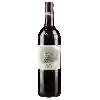
Château de la BrunetteAbôries de Brunette Bordeaux
This wine is a blend of 2 varietals which are the Malbec and the Merlot.
In the mouth this red wine is a powerful with a nice balance between acidity and tannins.
This wine generally goes well with poultry, beef or veal.
Taste structure of the Abôries de Brunette Bordeaux from the Château de la Brunette
Light | Bold | |
Smooth | Tannic | |
Dry | Sweet | |
Soft | Acidic |
In the mouth the Abôries de Brunette Bordeaux of Château de la Brunette in the region of Bordeaux is a powerful with a nice balance between acidity and tannins.
Food and wine pairings with Abôries de Brunette Bordeaux
Pairings that work perfectly with Abôries de Brunette Bordeaux
Original food and wine pairings with Abôries de Brunette Bordeaux
The Abôries de Brunette Bordeaux of Château de la Brunette matches generally quite well with dishes of beef, veal or game (deer, venison) such as recipes of navarin of lamb, alsatian fondue or rabbit with cider and prunes.
Discover the grape variety: Malbec
Malbec, a high-yielding red grape variety, produces tannic and colourful wines. It is produced in different wine-growing regions and changes its name according to the grape variety. Called Auxerrois in Cahors, Malbec in Bordeaux, it is also known as Côt. 6,000 hectares of the Malbec grape are grown in France (in decline since the 1950s). Malbec is also very successful in Argentina. The country has become the world's leading producer of Malbec and offers wines with great potential.
Informations about the Château de la Brunette
The Château de la Brunette is one of of the world's greatest estates. It offers 4 wines for sale in the of Bordeaux to come and discover on site or to buy online.
The wine region of Bordeaux
Bordeaux, in southwestern France, is one of the most famous, prestigious and prolific wine regions in the world. The majority of Bordeaux wines (nearly 90% of the production Volume) are the Dry, medium and Full-bodied red Bordeaux blends for which it is famous. The finest (and most expensive) are the wines of the great châteaux of Haut-Médoc and the right bank appellations of Saint-Émilion and Pomerol. The former focuses (at the highest level) on Cabernet Sauvignon, the latter on Merlot.
The word of the wine: Venaison
Applied to the bouquet of a wine reminiscent of the smell of big game.












